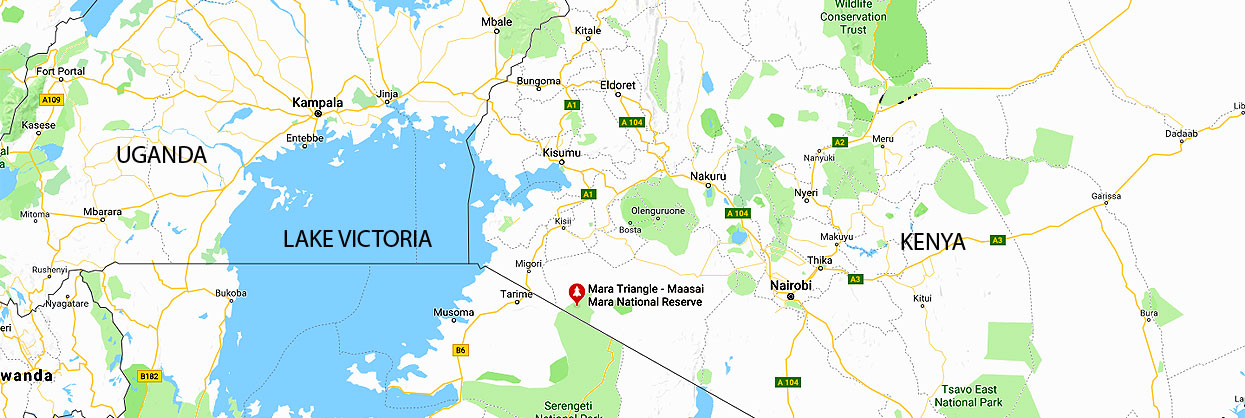Maasai Mara National Reserve

Reserve was originally established in 1961 as a wildlife sanctuary the Mara covered only 520 square kilometres (200 sq mi) of the current area, including the Mara Triangle. The area was extended to the east in 1961 to cover 1,821 km2 (703 sq mi) and converted to a game reserve under. Narok County Council (NCC).
The Maasai Mara National Reserve (MMNR) covers some 1,510 km2 (583 sq mi) in south-western Kenya. It is the northern-most section of the Mara-Serengeti ecosystem, which covers some 25,000 km2 (9,700 sq mi) in Tanzania and Kenya. It is bounded by the Serengeti Park to the south, the Siria escarpment to the west, and Maasai pastoral ranches to the north, east and west. Rainfall in the ecosystem increases markedly along a southeast–northwest gradient, varies in space and time, and is markedly bimodal. The Sand, Talek River and Mara River are the major rivers draining the reserve. Shrubs and trees fringe most drainage lines and cover hillslopes and hilltops.
The terrain of the reserve is primarily open grassland with seasonal riverlets. In the south-east region are clumps of the distinctive acacia tree. The western border is the Esoit (Siria) Escarpment of the East African Rift, which is a system of rifts some 5,600 km (3,500 mi) long, from Ethiopia's Red Sea through Kenya, Tanzania, Malawi and into Mozambique. Wildlife tends to be most concentrated here, as the swampy ground means that access to water is always good, while tourist disruption is minimal. The easternmost border is 224 kilometres (139.2 mi) from Nairobi, and hence it is the eastern regions which are most visited by tourists.
Altitude: 1500-2180m; Rainfall: 83mm/month; Temperature range: 12-30℃
Wildebeest, topi, zebra, and Thomson's gazelle migrate into and occupy the Mara reserve, from the Serengeti plains to the south and Loita Plains in the pastoral ranches to the north-east, from July to October or later. Herds of all three species are also resident in the reserve.
Elephants
Leopard climbing down a tree
All members of the "Big Five" (lion, leopard, African elephant, cape buffalo, and black rhinoceros) are found in the Maasai Mara.3 The population of black rhinos was fairly numerous until 1960, but it was severely depleted by poaching in the 1970s and early 1980s, dropping to a low of 15 individuals. Numbers have been slowly increasing, but the population was still only up to an estimated 23 in 1999.4
Cheetah with cubs
Hippopotami and crocodiles are found in large groups in the Mara and Talek rivers. Leopards, hyenas, cheetahs, jackals, and bat-eared foxes can also be found in the reserve.5 The plains between the Mara River and the Esoit Siria Escarpment are probably the best area for game viewing, in particular regarding lion and cheetah.
As in the Serengeti, the wildebeest are the dominant inhabitants of the Maasai Mara, and their numbers are estimated in the millions. Around July of each year, these animals migrate north from the Serengeti plains in search of fresh pasture, and return to the south around October. The Great Migration is one of the most impressive natural events worldwide, involving some 1,300,000 wildebeest, 500,000 Thomson's gazelles, 97,000 Topi, 18,000 elands, and 200,000 zebras. These migrants are followed along their annual, circular route by predators, most notably lions and hyena.6
Antelopes can be found, including Grant's gazelles, impalas, duikers and Coke's hartebeests. The plains are also home to the distinctive Masai giraffe. The large roan antelope and the nocturnal bat-eared fox, rarely present elsewhere in Kenya, can be seen within the reserve borders.
More than 470 species of birds have been identified in the park, many of which are migrants, with almost 60 species being raptors.7 Birds that call this area home for at least part of the year include: vultures, marabou storks, secretary birds, hornbills, crowned cranes, ostriches, long-crested eagles, African pygmy-falcons and the lilac-breasted roller, which is the national bird of Kenya.
MAASAI MARA SAFARIS PARKAGES